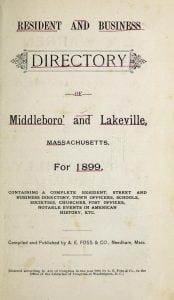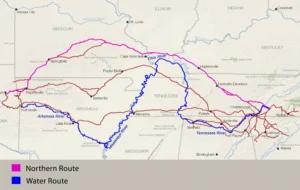Slave Narrative of Phoebe Banks
Person Interviewed: Phoebe Banks Location: Muskogee, Oklahoma Date of Birth: October 17, 1860 Age: 78 In 1860, there was a little Creek Indian town of Sodom on the north bank of the Arkansas River, in a section the Indians called Chocka Bottoms, where Hose Perryman had a big farm or ranch for a long time before the Civil War. That same year, on October 17, I was born on the Perryman place, which was northwest of where I lived now in Muskogee; only in them days Fort Gibson and Okmulgee was the biggest towns around and Muskogee hadn’t shaped up … Read more











